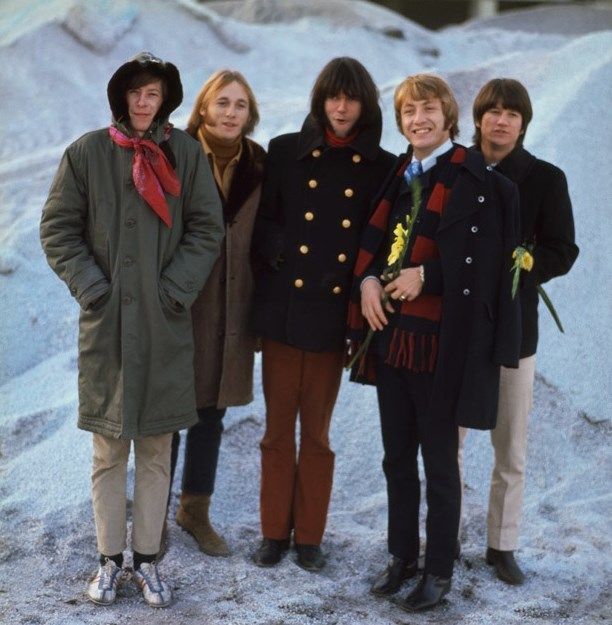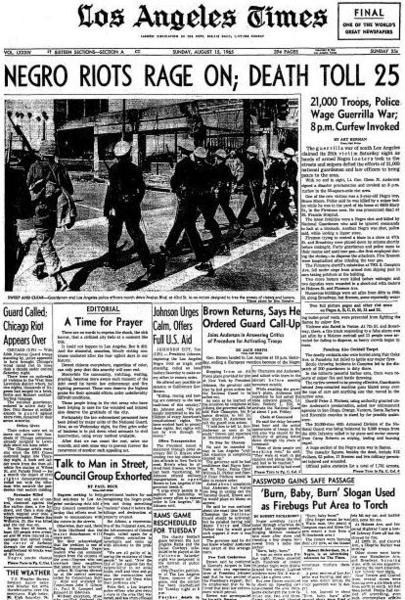Set the Night on Fire
This was written for an academic journal called The Sixties. The book in question is massive, heavy as a concrete block. Pretty absorbing.
. . . . . . . . . .
Copyright © 2025 William McKeen
It’s a shared audio memory, recognizable from its first note. A piercing guitar, a stumbling drumbeat, then another guitar sting, higher this time. Then the world-weary voice: “There’s something happening here. What it is ain’t exactly clear.”

The song is “For What It’s Worth” by Buffalo Springfield, remembered as an anthem of the 1960s, paired in memory with scenes of the civil rights movement and campus protests against the Vietnam War. But Stephen Stills didn’t write the song about either of those social movements; it was about a curfew protest at a teen nightclub in Los Angeles.
The song was vague. Many good things (the First Amendment, for example) are vague. This made the song adaptable to nearly any circumstance of protest, even though it was spawned by a so-called “riot” (mostly, kids jamming up the Sunset Strip) to expose curfew fascism at the popular teen / no-booze club, Pandora’s Box. (The Box served a great hot chocolate, by the way.)
The curfew-protest song became a universal anthem of discontent and it brings a focus to Los Angeles and its role in the movements of the 1960s, the subject of this massive book, Set the Night on Fire, by Mike Davis and Jon Wiener. That place and time have provided the setting for a spate of recent books and films, but Set the Night on Fire has its spotlight squarely on politics and social change, not music or film or murders ordered by Charles Manson.
Much of the protest action was elsewhere — in Madison and Ann Arbor, and in Selma and Birmingham — but the twisted dynamic of Los Angeles made it a veritable petri dish of dissent and discord. The media — primarily in the form of the Los Angeles Times — nearly became partners with the historically troubled police department — to beat back any threat to the status quo.

The Times of the 21st Century is a fine newspaper, but for most of the previous century it was a bible of toxic conservatism, vicious bile and outright deceit. The Chandler family, owner of the Times, used it as a vehicle to protect its financial interests and to encourage the extinction of Democrats on this planet. How bad was the Los Angeles Times? The first domestic bureau opened by the New York Times was in Los Angeles, not Washington, DC. The New York brain trust believed nothing in the Los Angeles newspaper.
The 1965 riot in Watts was a turning point in the city’s history and the authors here contrast the Times incendiary coverage — one headline: ’Get Whitey,’ Scream Blood-Hungry Mobs — with the less hysterical coverage of the LA Free Press, the year-old underground paper that would become a major bible of the counterculture. The FreeP coverage holds up better these decades later than the Times’ coverage. The FreeP had the novel idea of having Black reporters cover stories of Black unrest. Mainstream media wouldn’t get that particular memo for a few more decades.
Watts exploded in August 1965 when police stopped an African American driver in the overwhelmingly Black section of Los Angeles. Police smacked the driver with a baton and soon the story grew to include an account of out-of-control police officers kicking a pregnant bystander. (That wasn’t verified, but the story grew legs and spurred outrage.) The anger boiled and four days of unrest followed. It was the first of the long, hot summers that tore apart American cities in the 1960s. Traditional media reinforced the old narrative of rioters over-reacting to standard police procedure. The new media challenged those narratives and told the story from the inside out. Authorities used their power to employ the tactic of mass arrests to deal with a crowd estimated at 35,000.
Watts was a turning point in the movement for racial justice. After sit-ins, marches and boycotts, the Los Angeles riots offered violence. Police brutality was answered by group resistance. The explosion was inevitable. Civil rights leader Bayard Rustin called the Watts riots a major turning point — the first sign that Black Americans would no longer quietly accept the inequities of America’s racial divide.

Los Angeles was also the eye of the hurricane known as Angela Davis. Originally from Alabama and with an impeccable academic resume, Davis joined the UCLA philosophy faculty in 1969 and was immediately a target of the FBI. The UCLA philosophy department was always controversial, and the conservative local mainstream press called the faculty a bunch of atheists and Communists. William Randolph Hearst’s San Francisco Examiner outed Davis as a Communist and a program of pressure was spawn to remove her from the faculty. Implicated as the gun buyer in a courtroom shooting, Davis went underground, becoming briefly America’s most famous fugitive. She was, as the authors put it, “the most famous Black political prisoner in American history.”
Set the Night on Fire has several threads, chronicling as it does the Black Power, the anti-war and the Chicano-rights movements. In addition, the authors show the assertion of Asian American identity.
The 1960s marked the beginning of the end of the closeted life. In 1967, Los Angeles police arrested 14 men for kissing each other at midnight on New Year’s Eve in a gay night club. Two weeks later, 500 men staged a demonstration in the club’s parking lot, calling for an end to discrimination. This was two years before the Stonewall Uprising in New York, often cited as the inaugural event of the gay rights movement.
Not all of these movements worked in concert. Davis and Wiener offer examples of sexism within the anti-war movement, the dismissal of women’s intellect and opinions by the caesars of the counterculture. The embedded sexism was a part of movements and those inequities contributed to the burgeoning feminist movement by decade’s end. Again, the demonstrators asked for simple human dignity. Women were often at the hands of male physicians who dismissed patients who asked too many questions. One of the first elements of the movement to ascend into public consciousness was when women took control of their bodies. This included what became a regular event when those in the women’s movement gathered. A speaker took the stage, inserted a speculum to her vagina, and invited the crowd to inspect her cervix. Empowering women to take control of their bodies was one of the first goals of the feminist movement.
The medical establishment, which was intransigent on the issue, eventually responded, with more women entering the medical profession. A half century later, however, the condescension continues to exist.

Traditional media finally responded. When young Otis Chandler took over the family business in the early 1960s, he thought it in the best interest of the community for the Los Angeles Times to offer a larger and more nuanced portrait of the city. Though he was conservative, he did something that his father and grandfather had never done: acknowledge the existence of Democrats. No longer was the Times aimed at only the power structure. It acknowledged a diverse, culturally rich city that had been hiding in plain sight of the Chandlers. By the end of the decade, Otis Chandler changed that. He also realized that publishers did not define the news. The news was often defined in the streets.
Davis and Wiener offer a broad sweep of social movements, using Los Angeles as their base. Though the city was known for entertainment and hedonism, it’s apparent that key moments in all of these movements were birthed in the city, moving the needle of social change. They offer us a detailed, meticulously researched opportunity to look back. As the song suggests, it gives us a chance to stop … hey, what’s that sound? Everybody look what’s going down.
